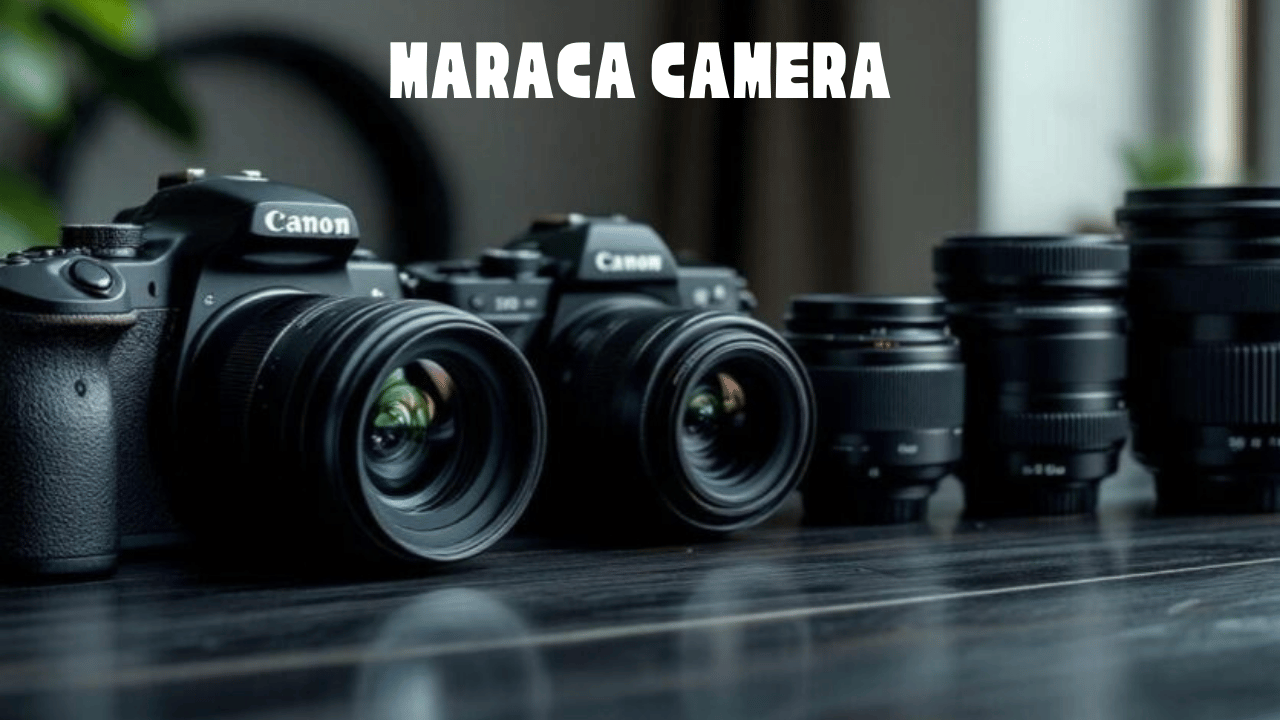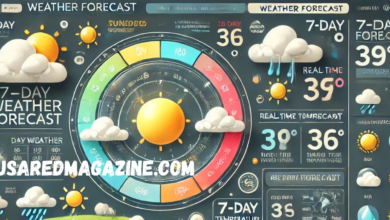Motion photography can be exhilarating and rewarding but also presents unique challenges. For those eager to capture action shots, sports moments, or even the flow of nature, traditional cameras often struggle to keep up with rapid movements. Enter the Maraca Camera, a cutting-edge device explicitly designed for mastering motion. In this guide, we’ll walk you through everything a beginner needs to know about using Maraca cameras to capture dynamic motion beautifully and effectively.
What is a Maraca Camera?
A Maraca Camera is a modern photography tool equipped with motion-sensing technology, allowing it to capture dynamic subjects in motion with precision and clarity automatically. Unlike traditional cameras that rely solely on manual settings to capture still images, Maraca camera detect movement in real-time and trigger the shutter at the perfect moment, enabling photographers to freeze action with a degree of accuracy previously unattainable.
The name “Maraca” is derived from the shaking instrument known for its rhythmic sound, symbolizing the camera’s ability to capture the rhythm of motion. Initially developed for niche applications like action sports and wildlife photography, Maraca cameras have become popular among enthusiasts and professionals who need to capture moments of intense movement without compromising quality.
What sets Maraca cameras apart is their advanced motion detection sensors. These sensors can identify when a subject begins moving within the camera’s frame and instantly adjust the shutter speed, exposure, and focus, ensuring the image is sharp, well-lit, and blur-free. Whether you’re photographing a sprinter crossing the finish line or a bird taking flight, the Maraca camera ensures that every moment is captured with crisp detail.
Key Features of Maraca Cameras
Motion Detection and Triggering
The primary advantage of a Maraca camera lies in its ability to detect motion. Traditional cameras rely on the photographer’s manual input to capture a moment. However, in fast-paced photography, the human eye can struggle to detect the precise moment of action. The Maraca camera’s motion sensors allow it to continuously monitor its surroundings for movement, automatically triggering the shutter at the ideal moment. This technology is essential for subjects moving at high speeds, such as athletes, wildlife, or vehicles.
In addition to triggering the shot, these cameras can adjust settings such as shutter speed and ISO in real-time. This allows photographers to maintain the right balance between exposure and clarity, even in fast-moving environments. When a photographer manually adjusts these settings, there’s always a chance of missing the perfect shot due to the unpredictability of motion. The Maraca camera eliminates that uncertainty by constantly adapting to the subject’s movement.
Image Quality and Resolution
Maraca cameras are not only about speed; they also excel in image quality. They are equipped with high-resolution sensors that can capture images with incredible detail. Even when capturing subjects in rapid motion, these cameras maintain image clarity, which is crucial for dynamic photography.
With resolutions ranging from 16 MP to over 50 MP in some models, a Maraca camera delivers high-quality images suitable for both professional use and personal projects. Maintaining crisp image quality is vital for action-packed environments, such as sports events or nature photography. The camera’s advanced algorithms and fast processing capabilities render images with true-to-life colors, sharp focus, and minimal noise or grain.
How to Use Maraca Cameras for Capturing Motion
Setting Up Your Maraca Camera
Setting up a Maraca camera for motion photography is straightforward, even for beginners. The first step is strategically positioning the camera to capture the subject’s motion. Whether it’s an athlete, a car, or a bird, getting the right angle is crucial for getting the best shot.
When using the camera, start by adjusting the motion detection sensitivity. Most Maraca cameras allow you to fine-tune the sensitivity of the motion sensors to movement. For fast-moving objects, such as a sprinter or a flying bird, increase the sensitivity so that the camera detects motion immediately. For slower-moving objects, reducing the sensitivity can help avoid unnecessary shutter triggers.
Next, ensure that you choose the appropriate shutter speed. Shutter speed plays a significant role in motion photography, as it determines how long the camera’s sensor is exposed to light. Faster shutter speeds help freeze fast-moving subjects, while slower speeds allow motion blur, which can be used creatively to convey the sense of speed or action.
Adjusting Settings for Different Types of Motion
Once you’ve set up the camera, it’s time to adjust the settings to match the type of motion you’re photographing. You’ll need a high shutter speed to freeze the motioyou’llfast-moving subjects, such as athletes or cars. A good starting point is around 1/1000 or faster. This will ensure that even the quickest movements are captured in sharp detail.
For slower motions, such as a walking animal or a dancer, you can lower the shutter speed to create a bit of motion blur, giving the image a sense of movement. Adjusting the ISO is also essential. A lower ISO is ideal for bright conditions, while a higher ISO is better for low light. However, be cautious, as higher ISO settings can introduce noise into your shots.
Common Mistakes to Avoid
Beginners often need to correct a few common mistakes when using Maraca cameras. One of the most frequent errors is misjudging the framing of a moving subject. It’s easy to get too focused on motion detection’s technical aspects and forget proper composition. Be sure to leave space around the subject for them to move into the frame, or you may cut off key parts of the action.
Another issue is overexposing images in bright environments. The automatic settings on Maraca cameras can sometimes misinterpret intense sunlight or bright backgrounds, leading to washed-out photos. Adjusting exposure settings or shooting during the golden hours can help avoid this.
Advanced Techniques for Mastering Motion Photography
Using Burst Mode and High-Speed Photography
While Maraca cameras are great at capturing single moments of action, many models also feature a burst mode, which allows you to capture multiple frames per second. This is incredibly useful for high-speed action, such as motorsports or athletes in mid-action. In burst mode, the camera will continuously shoot as long as the motion persists, giving you several options for choosing the perfect shot.
Additionally, the ability to shoot in high-speed photography mode is an essential feature of Maraca cameras. This lets you freeze incredibly fast-moving subjects—like a bird in flight or a water splash—without losing any detail.
Creating Artistic Motion Effects
In addition to freezing motion, Maraca cameras also allow photographers to create artistic effects by intentionally allowing motion blur. Techniques like panning, where the camera follows a moving subject, can make a beautiful sense of motion while keeping the subject sharp against a blurred background.
Post-Processing Motion Shots
After capturing motion shots, post-processing is essential to enhance the results. Lightroom or Photoshop can adjust the exposure, contrast, and sharpness. Additionally, motion shots can often benefit from a slight increase in comparison to make the subject stand out more against a blurred background.
Conclusion
Mastering motion photography with a Maraca camera opens up endless creative possibilities. Whether you’re a hobbyist capturing your soccer game or a professional photographer documenting high-speed sports, understanding how to harness the full potential of motion-sensing technology is key to getting the perfect shot. With its ability to detect motion, adjust settings in real-time, and deliver high-quality images, the Maraca camera is a powerful tool for any photographer interested in precisely capturing dynamic action.
FAQs
- What makes a mirrorless camera different from a traditional DSLR camera?
- Maraca cameras feature motion-sensing technology that automatically triggers the shutter when it detects movement, unlike conventional cameras that rely on manual input.
- Can I use a mirrorless camera for both still photography and video?
- Yes, mirrorless cameras are versatile and can be used for still photography and video, with settings that adjust for motion in both formats.
- Are Maraca cameras suitable for beginners?
- Absolutely! Maraca cameras are designed to be easy to use, even for beginners, with simple settings and motion detection features that eliminate the need for manual adjustments.
- What types of photography are best suited for a Mamiya camera?
- Miraca cameras are ideal for sports, wildlife, action photography, and motion blur shots.
- How do I adjust the settings to get the best motion shot?
- Adjust the shutter speed for fast-moving objects and increase or decrease the motion sensitivity depending on the subject’s speed.
You May Also Read: https://usaredmagazine.com/vidnoz-revolutionizing-content-with-dubbing-ai-for-seamless-global-reach/




